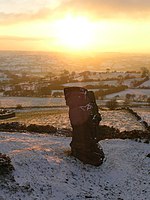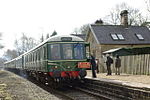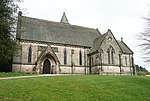Shottle and Postern
Amber ValleyCivil parishes in Derbyshire

Shottle and Postern is a civil parish within the Amber Valley district, which is in the county of Derbyshire, England. Sparsely built up with much rural expanse, its population was 270 residents in the 2021 census. The parish is 120 miles (190 km) north west of London, 9 miles (14 km) north west of the county town of Derby, and 2+3⁄4 miles (4.4 km) equidistant of the nearest market towns of Belper and Wirksworth. It shares a boundary with the parishes of Alderwasley, Ashleyhay, Belper, Hazelwood, Idridgehay and Alton, Turnditch and Windley.
Excerpt from the Wikipedia article Shottle and Postern (License: CC BY-SA 3.0, Authors, Images).Shottle and Postern
Lambhouse Lane, Amber Valley Shottle and Postern CP
Geographical coordinates (GPS) Address Nearby Places Show on map
Geographical coordinates (GPS)
| Latitude | Longitude |
|---|---|
| N 53.037 ° | E -1.539 ° |
Address
Lambhouse Lane
Lambhouse Lane
DE56 2DS Amber Valley, Shottle and Postern CP
England, United Kingdom
Open on Google Maps








